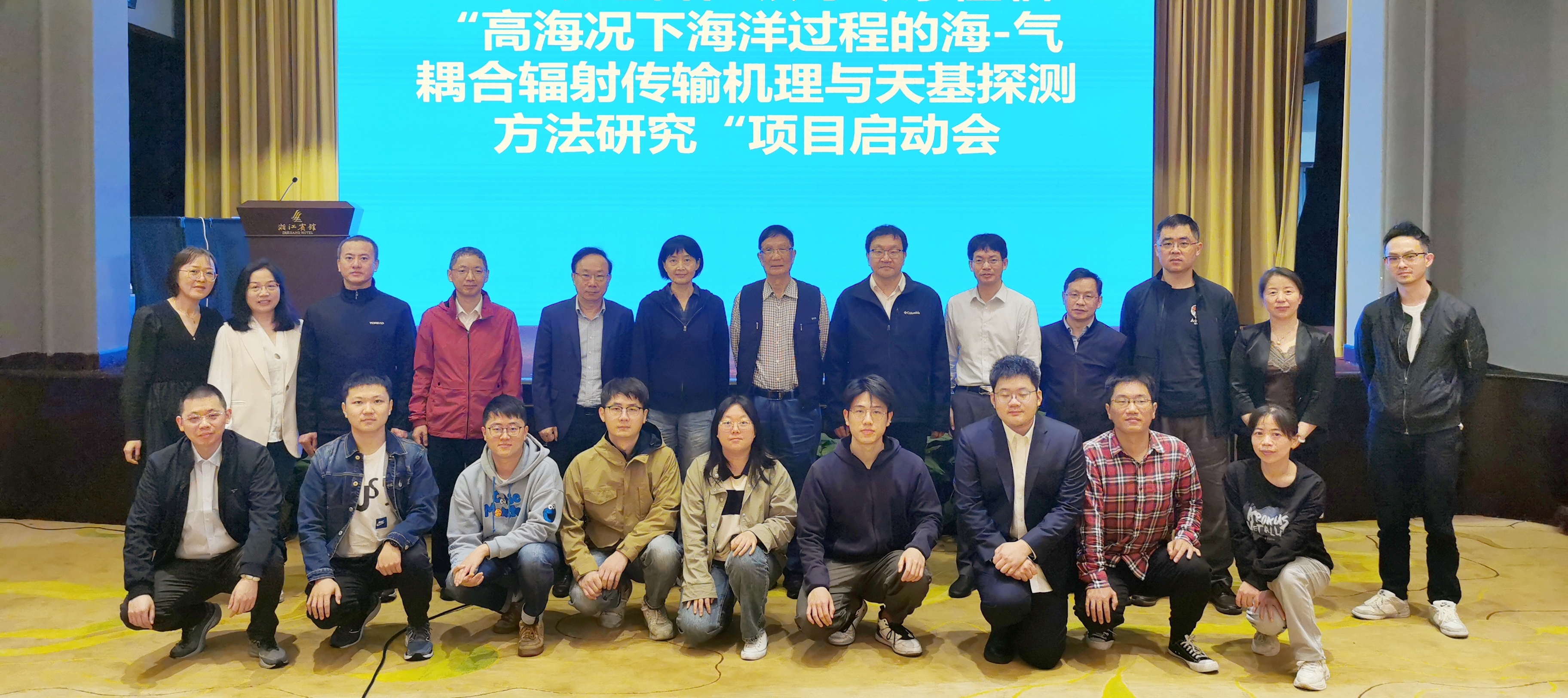On April 28, 2023, the launch meeting and working seminar of the National Natural Science Foundation of China joint fund key project "Research on the Sea-Air Coupled Radiation Transfer Mechanism and Space-based Detection Methods of Ocean Processes under High Sea Conditions" was held in Hangzhou. Academician Pan Delu, Chief Engineer Zhai Yumei, Chief Engineer Zhang Wei, Researcher Wu Kaiming, Chief Engineer Peng Renjun, Professor Han Dong, Professor Jin Gang, Professor Yang Feng, Researcher Bai Yan, Researcher Tao Bangyi and other experts attended the kick-off meeting. The meeting was chaired by researchers He Xianqiang and Ye Hui. Liang Yuyang, deputy director of the Science and Technology Division of the Second Institute of Oceanography of the Ministry of Natural Resources, expressed welcome and gratitude to the experts for attending this meeting and providing project guidance on behalf of the project supporting unit.
Researcher He Xianqiang, the project leader, introduced the overall implementation plan and gave a detailed introduction to the experts from the project research background and scientific issues, research objectives and content, research plan and expected results. High-precision detection of ocean processes by satellite remote sensing relies on complete ocean-atmosphere coupled radiation transfer mechanisms and models. Although the existing optical and microwave (including infrared) radiation transmission mechanisms and models can better support the satellite remote sensing detection of marine ecology and dynamic environment parameters under normal sea conditions, under high sea conditions (such as high wind speed, heavy rainfall, etc.), there are still many challenges, and there are still gaps in the sea-atmosphere coupled radiative transfer theory, model and remote sensing inversion method. In response to this scientific problem, the project plans to elucidate the impact mechanism of high sea conditions on the optical and microwave radiation transmission of the sea-air coupling medium system, establish an optical-microwave integrated radiation transmission model suitable for high sea conditions, and develop high-speed marine ecological and dynamic factors under high sea conditions. Precision satellite remote sensing inversion method explores new space-based detection mechanisms of ocean processes under high sea conditions, providing theoretical basis and key model support for the development of high-precision space-based detection platforms and payloads for ocean elements and key processes under high sea conditions.
The experts attending the meeting fully affirmed the importance of the project research and put forward constructive opinions and suggestions for subsequent implementation. Academician Pan Delu gave key guidance on the scientific connotation of the optical-microwave integrated satellite observation proposed in this project; Chief Engineer Zhai Yumei made suggestions on the content and methods of model verification of this project; Chief Engineer Zhang Wei made suggestions on strengthening the radiative transmission mechanism of high sea conditions, Suggestions are made on the scientific connection between new space-based detection mechanisms and ocean satellite application capabilities. After the kick-off meeting, the project team held a working seminar to analyze and implement the next research work. This meeting laid a good foundation for the smooth implementation of the project.
